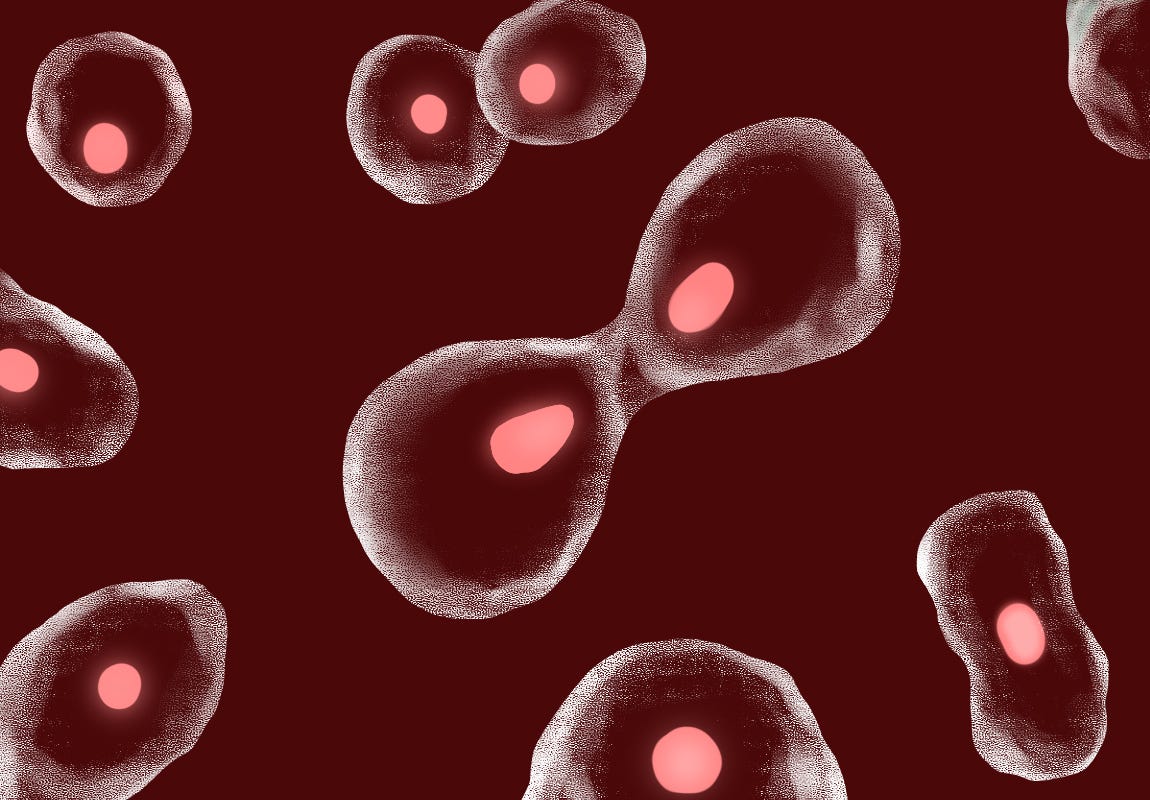A sheep was born in 1996, near Edinburgh in Scotland. The sheep, named Dolly, came into this world not by way of regular conception but through a novel technology called cloning. British biologists Ian Wilmut and Keith Campbell, along with their colleagues at the Roslin Institute, near Edinburgh in Scotland, spearheaded this technology, making cloning famous.
According to National Geographic, cloning is a technique scientists use to make exact genetic copies of living things. Some clones already exist in nature. Single-celled organisms like bacteria make exact copies of themselves each time they reproduce. In humans, identical twins are similar to clones. They share almost exactly the same genes. Identical twins are created when a fertilised egg splits into two.
Nuclear transfer and Cloning
According to Britannica, the first-ever demonstration of artificial embryo-twinning happened in 1885. The sea urchin is a relatively simple organism that is useful for studying embryonic development. Hans Adolf Eduard Dreisch realised this and showed that by merely shaking two-celled sea urchin embryos, cells could be separated out. Once separated, each cell grew into a complete sea urchin. This experiment showed that each cell in the early embryo has its own complete set of genetic instructions and can grow into a full organism, thus paving the way for further research.
In 1952, Robert Briggs and Thomas King transferred the nucleus from the cell of an early-tadpole embryo into an enucleated frog egg (a frog egg from which the nucleus has been removed from its cell). The resulting cell developed into a tadpole. The scientists created many normal tadpole clones using nuclei from early embryos. However, cloning was less successful with donor nuclei from more advanced embryos. The few tadpole clones that did survive grew with abnormalities.
Most importantly, this experiment showed that nuclear transfer was a viable cloning technique. It also reinforced two earlier observations. First, the nucleus directs cell growth and, ultimately, an organism’s development. Also, embryonic cells early in development are better for cloning than cells at later stages.
In 1984, Steen Willadsen used a chemical process to separate one cell from an 8-cell lamb embryo. Then he used a small electrical pulse to fuse it to an enucleated egg cell. As luck would have it, the new cell started dividing.
By this time, in vitro fertilisation (IVF) techniques had been developed, and they had been used successfully to help couples have babies. Willadsen placed the lamb embryos into the womb of a surrogate mother sheep. The result was the birth of three live lambs.
This experiment showed that it was possible to clone a mammal by nuclear transfer, and that the clone could fully develop. Even though the donor nuclei came from early embryonic cells, the experiment was considered a great success.
Gene cloning is the process in which a gene or parts of DNA are copied or cloned.
Scientists had tried cloning mammalian cells for decades and failed. This persuaded scientists to look for the important events in the growing mammalian embryo and the time of its differentiation. Wilmut and Campbell cloned Dolly from an adult Finn sheep’s udder cell. Wilmut and his colleagues at Roslin Institute used electric pulses to fuse the udder cell to an unfertilised ovum, thus creating Dolly.
This research evolved into the modern technique in cloning known as somatic cell nuclear transfer (SCNT). However, reproduction by cloning using SCNT is considered harmful as the embryos thus created outlive the pregnancy but are born with birth defects.
Wilmut’s team had to make 277 attempts to create Dolly. To create a Macaque monkey clone, 100 embryos were implanted in 50 female monkeys, but none of them resulted in pregnancy.
Types of Cloning
According to the National Human Genome Research Institute, cloning is of three types – gene cloning, reproductive cloning, and therapeutic cloning.
Gene cloning is the process in which a gene or parts of DNA are copied or cloned. Reproductive cloning is the deliberate production of genetically identical individuals. Therapeutic cloning is used in experiments to create tissues which are used to replace damaged or diseased ones.
Cloning experiments have provided many important insights into several cellular processes like nuclear reprogramming, cellular ageing, and genomic imprinting.
Gene cloning, also known as DNA cloning, is very different from reproductive cloning and therapeutic cloning. Though reproductive cloning and therapeutic cloning share many of the techniques, they are put to use for different purposes.
‘Natural’ clones
Some clones already exist in nature. Single-celled organisms like bacteria make exact copies of themselves each time they reproduce by asexual means. Parthenogenesis is a form of reproduction in which an egg can develop into an embryo without being fertilised by a sperm. It is a biological enigma. This happens in sharks, amphibians, and some reptiles. In humans, every cell is derived from a fusion of paternal sperm and maternal ovum. Identical twins are natural clones.
Cloning- the way forward
Researchers can use clones in different ways. An embryo resulting from cloning can be made into a stem-cell factory. Stem cells are the precursors capable of growing into different types of cells and tissues. They can be converted to neurons for the repair of damaged nerves or cells that make insulin to combat diabetes.
Cloning experiments have provided many important insights into several cellular processes like nuclear reprogramming, cellular ageing, and genomic imprinting.
Animal cloning has been put to different uses. They have been used to study gene mutations, which help scientists in understanding diseases in animals. Cows and pigs are cloned to produce more milk or meat. Even a dead pet animal can be recreated by cloning. CC (carbon copy or copycat) is the first cloned pet cat in the world. Cloning may be able to bring back even extinct species to life.
While the list of cloned animals increased, scientists started scouting, through cloning methods, for ways to recreate animals that are extinct or face the threat of extinction. The challenges in these efforts are finding donors and surrogates of closely related animals to the extinct ones.
In 2007, a research team under the American biologist Shoukhrat Mitalipov took a cell from an adult rhesus monkey and fused it with an enucleated egg cell. The embryo was allowed to develop for a time, then its cells were grown in a culture dish. These cells, because they can differentiate to form any cell type, are called embryonic stem cells. Their findings were published in the journal Nature.
Six years later, in 2013, Mitalipov and his team published, in the journal named Cell, their research on creating human stem cells from cloned human embryos. Their efforts culminated later in cloning a live monkey in 2018. Technology exists now to create human clones, but its implementation is hampered by ethical issues and many other obstacles.
Now put on your thinking hats and think about the following questions for a couple of minutes.
How would you describe the term “cloning” to your students?
Can you think of the differences between three types of cloning?
Can you think of the uses of animal cloning?
Write down your thoughts and discuss them with your students, children and your colleagues. Listen to their views and compare them with your own. As you listen to others, note how similar or different your views are to others’.
Thank you for listening. Subscribe to The Scando Review on thescandoreview.com.
Happy Teaching!













Cloning: Making genetically identical copies of living things